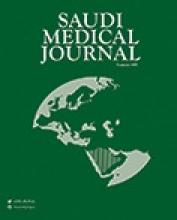Abstract
OBJECTIVE: In this study, the determination of Helicobacter pylori (H. pylori) by culture, histopathological and serological methods in cases of endoscopically diagnosed as duodenitis and duodenal ulcer (DU), a comparison of their relative advantages, and its antibiotic sensitivities were investigated.
METHODS: Helicobacter pylori was investigated using 3 methods (culture, histopathological and serological examination) in 50 patients (25 diagnosed with duodenitis and 25 with DU) at the Department of Gastroenterohepatology, Istanbul Haydarpasa Numune Hospital, Turkey between December 2000 and February 2001. An investigation into its antibiotic sensitivities to amoxicillin, clarithromycin, metronidazole and azithromycin by disc diffusion methods and to amoxicillin and clarithromycin by E-test were investigated.
RESULTS: Helicobacter pylori bacteria were observed in Gram stained preparates prepared from biopsy material in 34 out of 50 patients (68%), and were able to be produced in active culture in all these cases. Histopathological examination revealed the presence of H. pylori in 80% cases of DU and 60% cases of duodenitis; anti-CagA(IgG) was positively determined in 88% DU cases and in 60% duodenitis cases. There was a significant difference between the 2 groups in terms of diagnosis by histopathological and serological methods. The difference between the 2 groups produced in active culture in 84% cases of DU cases and 52% of duodenitis was statistically significant (p=0.0322). Using the E-test and disc diffusion methods, 8.8% of the strains that reproduced in culture were resistant to and 91.2% were sensitive to clarithromycin. All strains were determined to be sensitive to amoxicillin: 17.6% of the strains were determined to be resistant to metronidazole, 11.7% to azithromycin.
CONCLUSION: It was observed that Gram staining is a rapid and reliable method of pre-diagnosis for H. pylori; that histopathological examination methods are of considerable importance in diagnosis; and that the investigation of the positivity of anti-CagA(IgG) will be a guide in the identification of virulent strains in particular. In addition, it was also concluded that since serological examination does not require invasive measures, this will pose an advantage. The culture method can be applied with the aim of diagnosis in cases identified as DU using endoscopy, and that in cases resistant to treatment it can be applied for the purpose of determining antimicrobial sensitivity. E-test and disc diffusion methods exhibited a rather good correlation, for which reason the disc diffusion method can be used in the determination of antimicrobial sensitivity in H. pylori strains.
- Copyright: © Saudi Medical Journal
This is an open-access article distributed under the terms of the Creative Commons Attribution-Noncommercial-Share Alike 3.0 Unported, which permits unrestricted use, distribution, and reproduction in any medium, provided the original work is properly cited.






